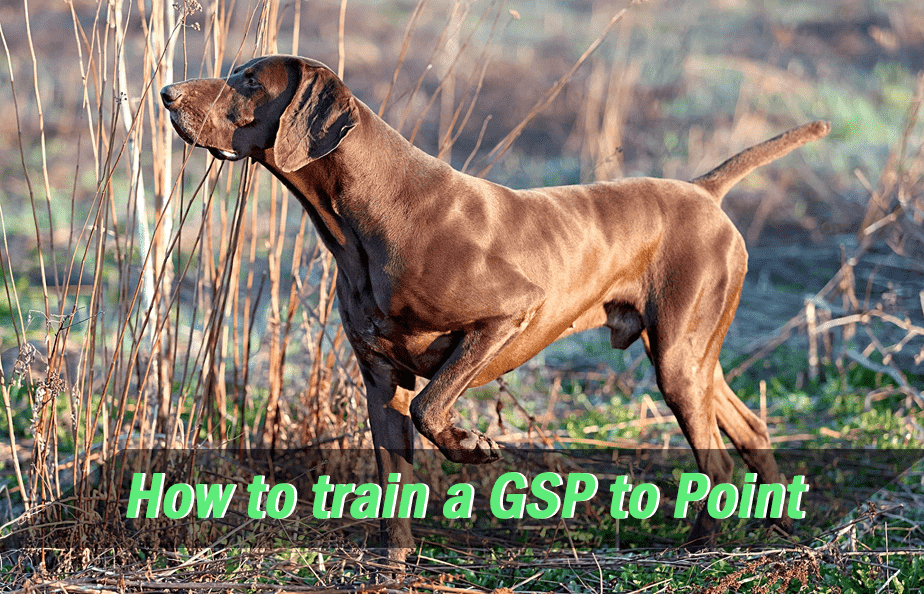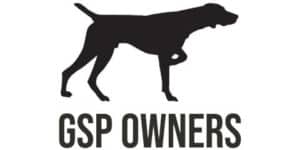German Shorthaired Pointers are well-loved canines and find themselves as beloved family member in many homes. They are very loyal and friendly animals who love spending time outdoors with their humans. If anything, they love running around and chasing squirrels at the park.
They also bring something more unique than just being great pets. Did you know your German Shorthaired Pointer didn’t just get their name for its sake? They’re called Pointers because they point. You can also train a German Shorthaired Pointer to Point with a little effort and guidance.

How to train a German Shorthaired Pointer to point?
Training a German Shorthaired Pointer to point is not as tough as it sounds. A few simple basic commands to fine-tune their instinct are all needed.
You can get training collars for your GSP, so you’ll have control during the training sessions. Ensure that your pup is only in areas where they feel safe and confident, so they don’t feel threatened and take off running.
Commands to train your German Shorthaired Pointer
One of the most basic commands to teach your dog would be the “whoa.” It can be a little tricky when your dog starts their training, but we know that it is something you will get the hang of as time progresses with each exercise.
Your dog needs to learn that “Whoa” means stop, so you start with a walk. Walk alongside your dog and say “Whoa!” when they begin to run ahead of you. When they stop, praise them by petting and telling them what an obedient pet they are.
The goal is to establish an association between hearing the command “Whoa” and learning to stand still. Your dog may need a gentle tug on its leash to remind them not to cross an invisible boundary around you, but remember, it should be done gently.
As your dog gains experience, you should work on making things a little more challenging. A great way to accomplish this is by slowly introducing more distractions. It’s important not to move too quickly, as it can confuse your puppy. Take time to introduce new training situations to encourage the dog to adapt to unfamiliar surroundings and follow your commands at home too.
Reinforcement methods
German Shorthaired Pointers get distracted and need reinforcements to make them pay attention. Many people prefer alternative training methods for their dogs rather than clickers or e-collars.
The e-collar and clicker have become popular alternatives that can help you teach your dog this command effectively. If you are trying to determine which works best for your situation, we suggest testing them out first.
Clicker
Clickers are small devices that emit a single “click” when pressed. They help pet owners form positive associations with their dogs by rewarding them in response to doing the desired behavior.
They can help dogs learn to respond positively to their owners. For example, if your dog sits on command, you can click and reward them with a treat to encourage the behavior.
The best way to use them is to go through the trainee’s exercise first and then have them do the same thing to communicate the accuracy of the response. Then get confirmation from the clicker (the quietest part of the exercise), which should help establish more reliable training patterns over time as they happen more often.
E collar
E-collars are effective for teaching dogs various commands. E-collars receive manual or remote radio-control signals via an owner’s handheld transmitter. One of the best uses for an e-collar is to teach your dog what you would like them to do in specific scenarios when they make a mistake.
People can choose whether or not they want their dog to feel good or bad about following instructions. For example, let’s say you are walking down the street with your dog and a squirrel runs up to your dog. You can then use an e-collar from afar to prevent the error from happening by delivering a small electronic stimulation.
Other tips and tricks
- Positive reinforcement:
One of our favorite ways to present treats is by putting them directly into our dogs’ food so that they would have no choice but to lick up their rewards for doing what we asked. Keeping them happy as they train is important. Showing them affection and praising them as they do what you say is an excellent way to help them learn precisely what you want from them.
- Consistency:
The best way to train your German Shorthaired Pointer quickly is to maintain consistency. Commit them to train every day. However, make sure you are not overtraining your dog.
Keep each training session not more than 15 minutes. You want to keep them interested and make them look forward to training.
What to do before training your German Shorthaired Pointer?
You can start training your dog early, but it is usually recommended to start when they’re about 8-9 weeks old. They are old enough to respond to commands at this age, and it won’t take a toll on their bodies. Regardless of breed, most people start training their puppies at this age.
You can start by taking your pets outside. You can take them out for walks to meet other dogs and animals. The idea is to familiarize them with different environments and other dogs. You can start this when they’re about 7 weeks too.
Basics of point training
It’s essential to practice the basics with them; full training comes along. Training your German Shorthaired Pointer to point is crucial to formalizing a good hunting technique. Especially when it comes down to the skill of pointing, one must be on top of their game.
There are two parts of this training that you should be working on simultaneously: making sure your dog doesn’t participate in the hunt itself and pointing out prey from a distance.
Teaching to follow directions
Teaching the dog to follow their point instead of moving in for the kill right away is one of the first basic lessons.
To be able to point, your German shorthaired pointer needs to learn how to listen to off-leash instructions. Train your dog to understand commands even when dealing with prey animals.
Teaching not to go directly for the kill
After training your dog to follow the direction you want, making your dog wait until the order to shoot is one primary concept in training. It’s a critical skill since they could run off independently after the game instead of waiting for you to permit them to bark.
To perform as a hunting dog, they should be able to find their target and stay there until after you carry out your action, even if it turns out that the prey makes a run for it before being shot. Distracting animals at any moment can stop your business if you aren’t careful enough.
Keeping still
When it comes to hunting, the final step is teaching your dog to stay still as your prey takes off.
Having a friend help you with this one is a good idea. Give your dog ample time for the animal to entirely depart from sight, and then give them the whoa command. Your friend will now try and make noise of some kind to startle the prey that is hopefully far out at that point.
Take note of whether or not your dog remains perfectly still during all of this, and give lots of praise when he performs correctly. Repeat the step above, but you’ll be using your dog on a long, slack leash this time.
A great way to refresh their memory while not taking up too much of your time is simply by practicing these steps every once in a while, whenever possible.
What does a German Shorthaired Pointer point at?
German Shorthaired pointers are natural hunters and excellent trackers. They can pick up any scent in an instant. Once they have marked/ identified the smell, they will point in that direction. German shorthaired pointers differ from other sniffers or tracking dogs by sniffing the ground.
This is why they make great companions for hunting and even sniffer dogs. Their keen sense of smell makes them effective in tracking dogs too. This breed works with the police as a K-9 unit to sniff drugs, narcotics, and even bombs.
Conclusion
German Shorthaired Pointers are great learners and very eager too. They love positive reinforcement; a little praise will go a long way. You’ll have a lot of fun training your pup.
You don’t have to stress about training your German Shorthaired Pointer. They are quick learners and have a great sense of smell, and it is in their instinct to point towards a scent they picked up.
Also, there is no reason to worry if your dog hasn’t swiftly picked up this skill of pointing. They will love spending time with you and soon be pointing at the door to play. They will eventually get there; enjoy your time training your dog.

